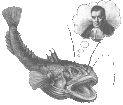UW Aquatic & Fishery Sciences Quantitative Seminar
Brian Leo
School of Aquatic and Fishery Sciences, University of Washington
An Examination of Predator Control Techniques to Maximize the Protection of Critically Endangered Species
Abstract
Introduced predators pose a serious threat to native fauna and are one of the most important causes of declines and extinction of species worldwide. Feral cats have been shown to be a primary contributor to species decline throughout the world and are especially threatening to insular species that lack appropriate defense characteristics. It is important to understand feral cat population dynamics and space use in order to implement effective control strategies. A feral cat control program designed to protect the endangered Mariana Crow on Rota Island in the Commonwealth of the Northern Mariana Islands has been in operation since February 2012; however the effect of the program on the feral cat population is largely unknown. Here, I attempt to describe the feral cat population using a discrete form of the Schaefer model. Model results suggest that the current removal strategy may need to be adjusted in order to maximize efficiency. I also attempt to describe feral cat home range using GPS data logging collars. Home ranges were deemed fully “revealed” if asymptotes were reached using incremental analysis and nonlinear least squares-based evaluation of a Michaelis-Menton model. The same model was used to predict home ranges for datasets that did not appear to reach asymptotes. I conclude that a larger sample size is needed to accurately estimate home ranges separately for males and females and that the Michaelis-Menton model may be a useful tool for exploring feral cat home range data.

